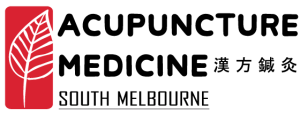Can acupuncture treats migraine headache? This post discusses migraine headaches from both Western and Eastern medicine perspectives, including their signs and symptoms.
Western medicine typically characterises migraines as a recurring type of headache that causes severe throbbing or pulsing pain, often on one side of the head.
In Chinese medicine, migraines are further divided into eight different patterns, each providing unique insights into the condition.
Migraine Headache Western Medicine Diagnosis and Chinese Medicine patterns:
Migraine without Aura (Common Migraine):
- Western Medicine Diagnosis: Migraine without Aura is characterised by recurrent moderate to severe headaches without any warning signs or auras. The pain is often pulsating and affects one side of the head. Other symptoms may include nausea, vomiting, sensitivity to light and sound, and visual disturbances during the headache.
- Chinese Medicine Pattern: In Chinese medicine, common migraine can be associated with Liver Qi stagnation, where there is an imbalance in the flow of Qi in the liver or gall bladder meridians.
Migraine with Aura (Classic Migraine):
- Western Medicine Diagnosis: Migraine with Aura involves specific warning signs or auras before the onset of the headache. Auras can include visual disturbances like flashing lights or zigzag lines, as well as sensory, motor, or verbal disturbances.
- Chinese Medicine Pattern: In Chinese medicine, class migraine can be associated with liver fire, where there is an excess of heat and energy in the liver meridian, leading to visual disturbances and other symptoms.
Chronic Migraine:
- Western Medicine Diagnosis: Chronic Migraine is diagnosed when a person experiences headaches on 15 or more days per month for at least three months, with at least eight of those days being migraines.
- Chinese Medicine Pattern: In Chinese medicine, chronic migraines can be associated with a variety of patterns, including Kidney and Liver Yin deficiency, Qi and Blood deficiency, and sometimes Phlegm and Damp stagnation.
At Acupuncture Medicine South Melbourne, we aim to identify specific Chinese medcine pattern associated with migraine headache to providing more personalised treatments.
8 Migraine headache patterns from Chinese Medicine Perspective.
Liver Qi Stagnation Pattern:
- Signs and Symptoms: Throbbing pain on one side of the head, irritability, mood swings, chest tightness, a feeling of a “plum pit sensation” in the throat, and possibly alternating constipation and diarrhea.
- Pulse: Wiry or tight pulse.
- Tongue: Red sides and tip, with a thin white or slightly yellow coating.
- Aggravating Factors: Stress, frustration, anger, and emotional triggers.
- Migraine Cycle/Frequency: Migraines may be triggered by emotional fluctuations, and the headaches might occur in response to stressful situations or suppressed emotions.
Liver Qi Stagnation with Fire Pattern:
- Signs and Symptoms: Severe throbbing pain on one side of the head, intense irritability, red face, restlessness, bitter taste in the mouth, and possible symptoms of Liver Qi Stagnation.
- Pulse: Wiry and rapid pulse.
- Tongue: Red sides and tip, yellow coating, and possibly red spots on the tongue.
- Aggravating Factors: Emotional stress, anger, and excessive alcohol or spicy food intake.
- Migraine Cycle/Frequency: The presence of fire indicates an excess condition, and migraines may occur during periods of emotional turmoil or when indulging in alcohol and spicy foods.
Liver Fire Pattern:
- Signs and Symptoms: Pulsating and severe headache on one side of the head, extreme irritability, red face and eyes, dizziness, tinnitus, and a bitter taste in the mouth.
- Pulse: Rapid and forceful pulse.
- Tongue: Red tongue with a thick, yellow coating, especially in the center or back of the tongue.
- Aggravating Factors: Emotional stress, anger, and excessive consumption of greasy, fried, and spicy foods.
- Migraine Cycle/Frequency: The presence of fire indicates an excess condition, and migraines may occur during times of emotional upheaval or after eating trigger foods.
Kidney and Liver Yin Deficiency Pattern:
- Signs and Symptoms: Migraines accompanied by dizziness, blurred vision, night sweats, dry eyes, dry throat, a feeling of heat in the body, irritability, and possible symptoms of Kidney Yin Deficiency.
- Pulse: Thin and slight rapid pulse, especially in the Kidney and Liver positions.
- Tongue: Red tongue with little or no coating, possibly cracked or peeled in the Kidney and Liver areas.
- Aggravating Factors: Overwork, lack of rest, and excessive mental strain.
- Migraine Cycle/Frequency: Yin deficiency patterns may lead to chronic migraines, triggered by exhaustion and prolonged periods of stress or overexertion.
Yin Deficiency with Deficient Heat Pattern:
- Signs and Symptoms: Intense and throbbing headaches, a sensation of heat in the head and body, night sweats, dry mouth and throat, restlessness, and possibly symptoms of Yin Deficiency.
- Pulse: Rapid and thin or floating, empty pulse.
- Tongue: Red and dry tongue, possibly with little or no coating, and possibly with cracks.
- Aggravating Factors: Emotional stress, overexertion, and lack of proper nourishment.
- Migraine Cycle/Frequency: Migraines may occur during times of heightened stress or when the body is depleted due to a lack of nourishment.
Qi Deficiency Pattern:
- Signs and Symptoms: Dull and lingering headaches, fatigue, weakness, shortness of breath, spontaneous sweating, and a tendency to catch frequent colds or infections.
- Pulse: Weak or deficient pulse.
- Tongue: Pale tongue with a thin white coating.
- Aggravating Factors: Fatigue, overexertion, and lack of proper rest.
- Migraine Cycle/Frequency: “Migraines become more frequent or worsen when tired or has a compromised immune system.
Yang Deficiency Pattern:
- Signs and Symptoms: Chronic and persistent headaches, aversion to cold, cold extremities, fatigue, low energy, and frequent urination with clear, copious urine.
- Pulse: Deep and weak or slow pulse.
- Tongue: Pale and swollen with a thin white coating.
- Aggravating Factors: Exposure to cold and damp environments, lack of warmth.
- Migraine Cycle/Frequency: Migraines may worsen during cold weather or when the body is exposed to the cold/dampness.
Qi and Blood Deficiency Pattern:
- Signs and Symptoms: Dull and throbbing headaches, pale complexion, dizziness, palpitations, poor concentration, and possible menstrual irregularities in women.
- Pulse: Weak and thready pulse.
- Tongue: Pale tongue with a thin and slightly dry coating.
- Aggravating Factors: Poor nutrition, inadequate sleep, and overexertion.
- Migraine Cycle/Frequency: Migraines may occur more frequently when the body is depleted due to poor nutrition and lack of rest or during menstruation.
At Acupuncture Medicine South Melbourne, we can help alleviate migraine headaches. Talk to our friendly acupuncturists today.


